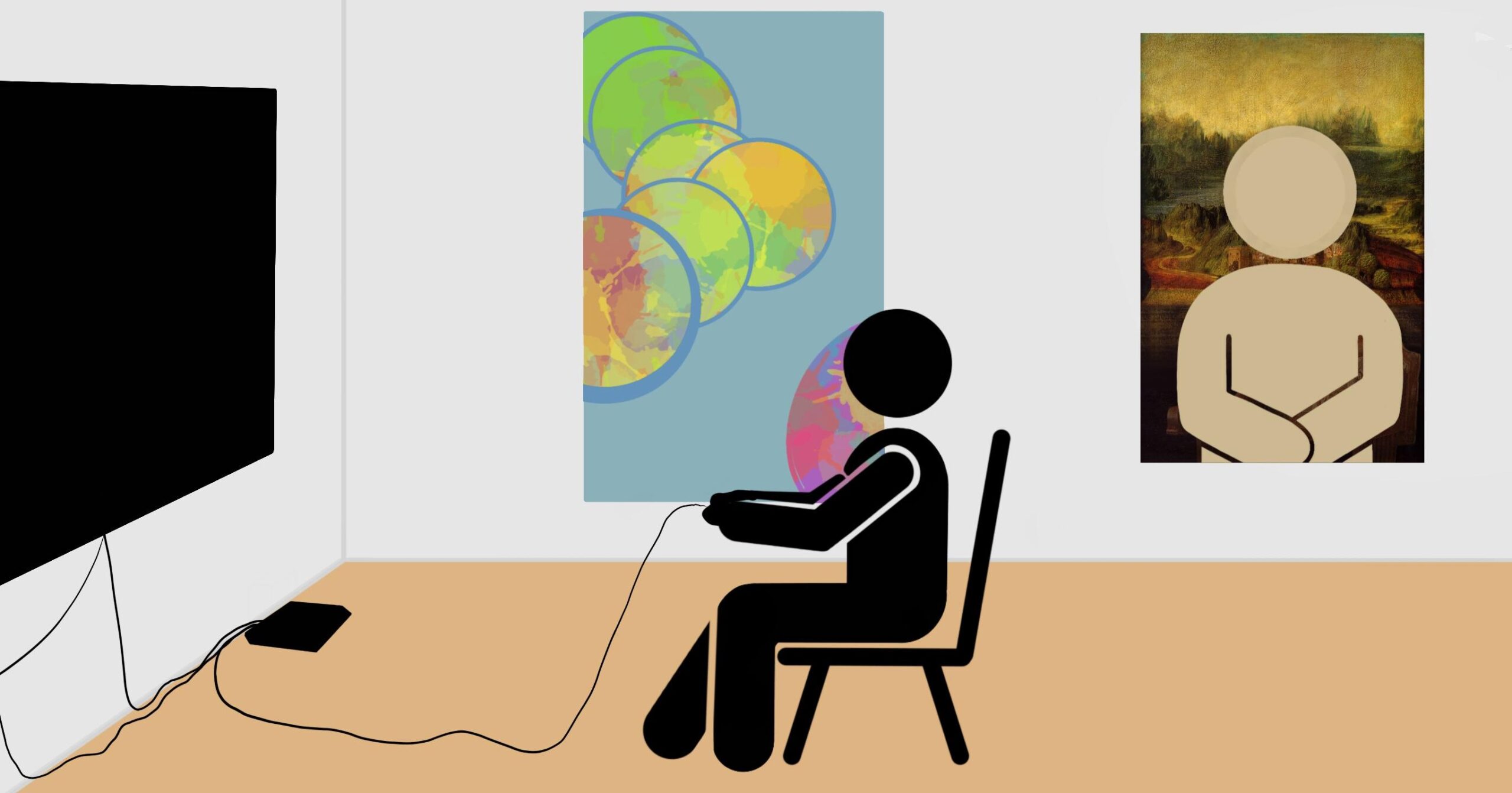by Andrew Yarborough
Interactive media should be considered art. In the same way that dozens of musicians contribute to a symphony, numerous digital artists contribute to a game. Each person has a specific role in creating something unique. That role may be creating music, shading, concept art, or any number of other tasks.
Art itself covers an extremely large selection of topics. Physical paintings can range from wildly varied and crowded Renaissance paintings to simplistic modern art. The actual definition of art has expanded over the years, which has led to a debate over whether interactive media should be considered art.
Much of our media today is devoted to exploring things that could never ordinarily happen. All of our superhero and fantasy media capitalize on this, and interactive media like video games aren’t any different. There is always a layer of separation between the reader and a character in a book, but I still remember the first time I stepped out into the open world playing “Legend of Zelda: Breath of the Wild” as if I were the one in the game.
Typical art might be more about expressing certain feelings, but the freedom found in games is like an open canvas for you to paint your own masterpiece.
A game that gives players this kind of an open canvas is “Ghost of Tsushima.” The game was created by a team specifically to create a surreal experience that amplifies the natural beauty we find in the real world.
Visual beauty and freedom are not the only things that contribute to this debate over whether video games should be considered art. Some developers give such acute attention to immersion in their games that the resulting products can be viewed in the same way that literature or cinema are.
“Hellblade: Senua’s Sacrifice” is a 2017 game from the studio Ninja Theory. Its gameplay is broken up into two parts: sword-to-sword combat and intricate puzzles. At face value, it seems like a normal action-adventure game. What makes this game different are the mechanics at play and the way the story is delivered.
The game recommends that it be played with headphones because there are constantly voices speaking to you, and these voices play a large role in distorting the player character’s reality. This serves to create a personal and empathic experience for the player. Senua is implied to have schizophrenia, and hearing Senua’s thoughts for the entirety of the game connects you to her in a way that not many other kinds of media could.
This mechanic is present throughout the entire game and is applied in several different ways. One section of the game takes place in the dark, and there is almost no way to navigate it without the audio. One could argue that this core mechanic of the game makes it not accessible to everyone and that it is actually a fault, but I like to think it was a deliberate and weighed choice by the creative team in order to deliver a perfected audiovisual experience.
Think about other forms of art and the goals they are trying to achieve. Sometimes the aim is to express technical proficiency or natural beauty, but often it is about expressing an emotion in a way that can be interpreted in many different ways
Interactive media allows everyone to have their own experience, and having your own experience means that you are going to look at things differently. Whether you’re a cowboy riding through a shrinking wild west or driving a car into a soccer ball, there is an experience out there that will be uniquely yours.
Interactive media is art because the countless hours put into these games by developers creates experiences with meanings that are uniquely our own. Every time we immerse ourselves in digital worlds, every time we take an in-game screenshot, and every time we feel something while playing a game, we are consuming art.

